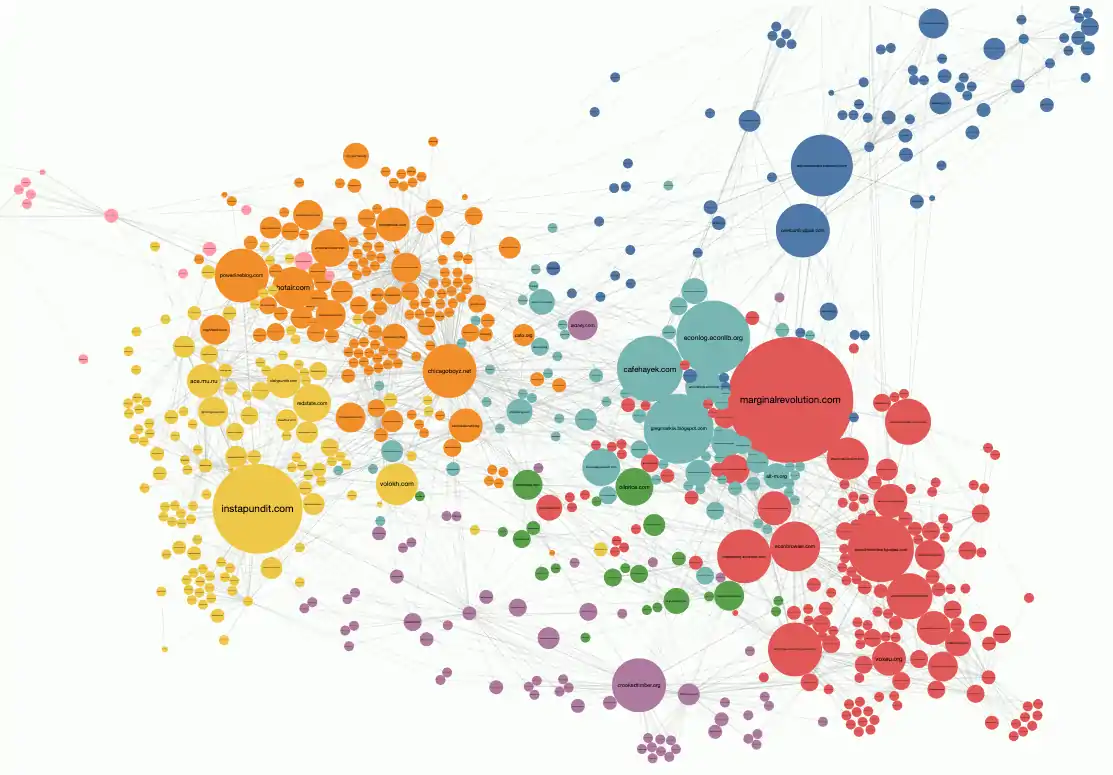The blogosphere
Now with added newsletter-o-sphere
2014-12-29 — 2025-01-21
Assumed audience:
Nascent producers and consumers of online punditry
Blogging and newsletter authoring for general pundits. Closely related: subscribing to feeds, which is a convenient and natural way to read and interact with blogs. These days, there is a fashion for email first blogs because it provides a handy on-ramp for people who do not know how to subscribe to feeds.
A lot of the blog discussion here assumes basic verbal punditry. The technicalities of academic blogging can be a little different; see that page for more HOWTOs on mathematical markup and citations.
1 Why
Incorporating why not.
-
As you start routing information and putting out blog posts, you will begin to accumulate connections. Useful information will start to stream toward you, turning you into a small hub yourself. This will allow you to collect and curate information and route it back out, which will allow even more people to connect to you, in a flywheel that lets you do increasingly useful and good work. I especially enjoy it when intelligent people attack me; I then invite them to comment on upcoming drafts.
You can also post to subreddits and forums, like LessWrong or the SlateStarCodex subreddit, that act like intellectual cafés on the internet. Pasting your posts there, it is easy to find community when you are starting out; you don’t have to scream into the void.
-
Blogging acts as a lighthouse.
Lighthouses are famously easy things to spot. They broadcast their presence far and wide. It’s their only function. Being a lighthouse makes you easier to find, which is to say, it helps advertise your existence to the sort of people you’d like to find.
Ribbonfarm is Retiring is an overview of the blogosphere as at 2024 from someone who was in it for 17 years.
Adam Mastroianni, A Theory of Blogs
Most culture is produced by committee. Books, movies, music, video games, op-eds, scientific papers, etc. all have to pass through a gauntlet of editors, producers, reviewers, lawyers, and algorithms before they’re allowed to reach your eyeballs. Committees cost money, so they have to produce things that please enough people to turn a big profit, or else the committee will starve. And so they try to reduce variance, risk, and weirdness, and in raising the floor, they also lower the ceiling. The culture they produce is unlikely to offend or repulse, but it’s also unlikely to challenge or enchant. It’s usually fine and rarely sublime.
(This is why most of popular culture consists of reruns, repeats, sequels, and spinoffs.)
And that’s all right. It’s fun to numb your brain every once in a while by watching an Avengers movie or reading a New York Times op-ed about why this Donald Trump guy might not be all he’s cracked up to be.
But the committees leave lots of weird little niches unfilled. They can’t contemplate strange ideas, they can’t countenance obsession, self-indulgence, or idiosyncrasy, and they can’t risk confusing people or pissing them off. Unfortunately, doing interesting work often requires a dash of all those things.
That’s where blogging comes in. When you don’t have a committee to feed, you can afford to be weird. You can allow yourself all of the excesses that are necessary for producing something that rearranges the furniture in someone’s mind. The lack of quality control means that blog posts are usually bad, but they’re occasionally magnificent. That’s fine by me—finding good stuff to read is a strong-link problem.
2 Static site
What I currently do. See static site.
3 Wordpress
Classic, and I used to use it a lot.
Pro: integrates into other things well. Offers both open-source and hosted versions.
4 Email-first blogs
Email subscriptions are useful for people who do not know how to read feeds or like keeping stuff in email.
They are a rough fit for this blog, which never “finishes” anything, but they are popular.
See email blogs for more thoughts on those.
5 Medium
Pretty blogs.
The aesthetic is not mine, and I am irritated by their nagging to register to read articles. The community reading features are nice, and they achieved a lot of market share for a while. I think Substack has surpassed them now.
6 Wix
OK I guess.
7 Squarespace
Not a fan of this product. Does not integrate with anything; it is a walled garden. Not especially cheap. Websites look fine, but they are heavy and tedious to create.
Suits people who really want to use a word processor that prints to the Internet, but also want someone else to own and operate that word processor. That is not me, although some people might be into it and that’s OK.
8 Incoming
- ooh.directory: find good blogs that interest you
- Great bloggers are rare, weird, and not team players - Kevin Drum
- How to Monetize a Blog read this to the end, maybe on a desktop browser

